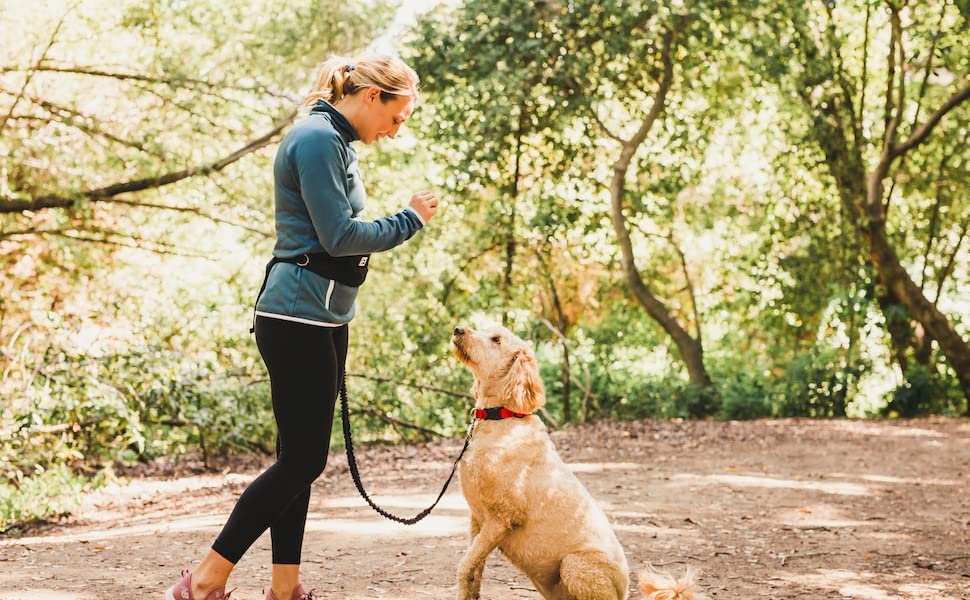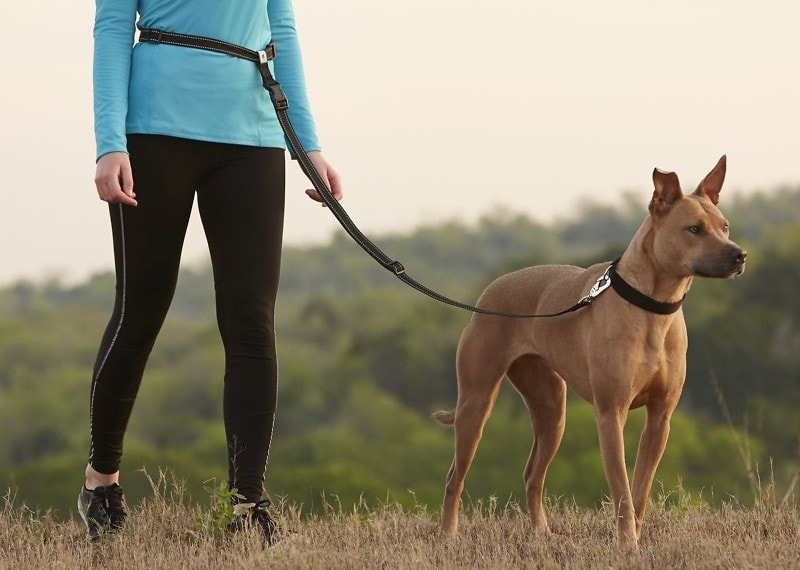The Hands-Free Dog Leash: Pros and Cons
Getting your dog to walk on a leash remains one of the most confounding aspects of dog ownership. Unless you work with trained dogs or are well-versed in animal behavior, it can be difficult to get your dog to walk on a leash until you figure out how to do so without pulling on him throughout the entire interaction. Using a hands-free leash keeps you from overworking your dog and ultimately makes for a more enjoyable experience for all involved.
A hands-free leash is a product that allows you to walk your dog without having to hold on to the leash. This can be beneficial if you have limited mobility, such as if you’re elderly or disabled. It can also be useful for people who want to take photographs or even just enjoy a stroll with their pet without having to keep a hand on the leash.
The idea behind these products is that they keep your dog close by and under control without you having to restrain them with your hand. These leashes come in a variety of different forms, from harnesses that let your dog pull against a strap around their chest rather than pulling against your hand, to electronic shock collars that administer an electric shock when they attempt to run off.
Are Hands-Free Leashes Safe?
Hands-free leashes are designed for dogs who have a hard time walking on a leash. They’re intended to give your dog freedom without compromising safety. But are they safe?
Hands-free leashes are supposed to prevent your dog from running off, pulling you down, and causing injuries. They also prevent you from having to hold onto the leash while you’re driving, which could be dangerous if your dog suddenly pulls or lunges forward.
Some hands-free leashes are designed to clip onto your waistband or belt buckle. Others wrap around your wrist so that you can keep one hand free while walking your dog.
The idea is that if your dog gets away from you or starts running in another direction, he’ll hit himself against the tether and stop. If he continues to pull, then he’ll get hurt by hitting himself against the tether again and again until he gets tired enough to stop tugging on it or until it breaks under his weight and falls off his neck or collar ring.
But there’s no guarantee that this will happen when using any type of hands-free leash — especially if nothing is stopping him from running into something like a tree trunk or fence post before he hits himself against anything else!
Pros of Hands-Free Dog Leashes
Walking well-behaved dogs
The best dog leash for walking your pooch is one that allows you to keep both hands free while still being able to control your pet. Once your dog learns how to walk on a leash, he will be less likely to pull and more likely to stay by your side.
Walking well-behaved dogs is not only a pleasure for humans, but it is a pleasure for the dogs as well. When walking your dog, he or she will want to explore and sniff everything they come across. If you are holding onto the leash, it can be difficult to control your dog and keep them on a straight path.
Most people do not like to walk their dogs on leashes because they feel that it is not good for their pets to be restricted in this way. However, if you have an obedient dog that listens when you call them back when they get too far ahead of you, then there is no reason why you should not be able to walk them on a leash.
Running with your dog on a hands-free leash
Running with your dog is a great way to get some exercise and spend quality time together. However, having to hold onto the leash can be a real pain.
The hands-free dog leash allows you to run without worrying about holding onto the leash. It allows you to run at your speed while your dog runs freely beside you.
When running with your dog, there’s always the risk of an accident happening. Your dog may slip and fall or even jump off a curb and run into traffic. This can happen in an instant, so it’s important to be prepared by having a hands-free leash handy at all times when running with your pet. With one hand free, you can grab hold of your dog if they do start to pull away from you while running or stop them before they run off toward danger in their excitement!
Choosing to allow pulling
Dogs love to pull. It’s in their nature. When we allow them to pull, it makes them feel like they are in control of their walk and not us. As a result, we lose control of our dogs and the situation.
Pulling on the leash can lead to other unwanted behaviors such as jumping, lunging, or barking at other dogs and people. Pulling also makes walking your dog a much less enjoyable experience for everyone involved.
A hands-free dog leash is an excellent tool for training your dog to walk nicely on a leash without pulling. Hands-free leashes allow you to keep your hands free so that you can reward good behavior with treats or toys and discourage bad behavior by being able to reach out and correct quickly if needed. They are also great for long-distance walking because they reduce fatigue in your arms from holding up your dog’s weight while walking over long distances or on uneven terrain (like off-leash hiking trails).
Cons of Hands-Free Leashes
You don’t have as much control as you would with a standard leash
Hands-free leashes are great for keeping your hands free, but there are some drawbacks to consider.
One of the biggest concerns about using a hands-free dog leash is that you don’t have as much control as you would with a standard leash. One of the advantages of the standard leash is that it allows you to easily guide your dog in the direction you want him to go. With hands-free leashes, it’s harder to direct your pooch because he’s not connected directly to your hand.
Another issue with hands-free leashes is that they don’t allow you to give immediate correction when your pup misbehaves. You might have difficulty correcting him if he pulls away from you or lunges toward another dog on the sidewalk. If this happens, it could be dangerous for both you and other people in the vicinity of your walk.
It’s more difficult to walk dogs who pull a lot
One of the biggest drawbacks of a hands-free dog leash is that it can be harder to walk your dog.
If your dog pulls on the leash, walking them with a hands-free leash can be frustrating and difficult. Some dogs are very strong and they can pull you off balance by pulling on the leash.
If your dog pulls on their leash too much, this can cause injury to your back and shoulders.
This is one of the biggest cons of using a hands-free dog leash because it can make walking your dog more difficult and tiring than normal.
If you have an especially strong dog, then this may not be an issue for you, but if your dog tends to pull or tug on the leash, then this could be a big problem for you.
Working on healing or loose-leash walking is more difficult
The problem here is that, on a traditional leash, you can use your hand to guide the dog. This can be especially helpful when working on healing or loose-leash walking.
If your dog pulls away from you, it’s easy to gently guide him back where he needs to go. However, with a hands-free leash, this isn’t possible, and pulling becomes even more difficult for both you and your pup.
Some people like using a hands-free leash for dog training because they believe it helps them teach their dog better manners by making pulling more difficult. However, this isn’t always the case. There are some experts who argue that hands-free leashes make pulling worse.
Do you want to learn how to correctly use a hands-free dog leash? This video will help you out!






